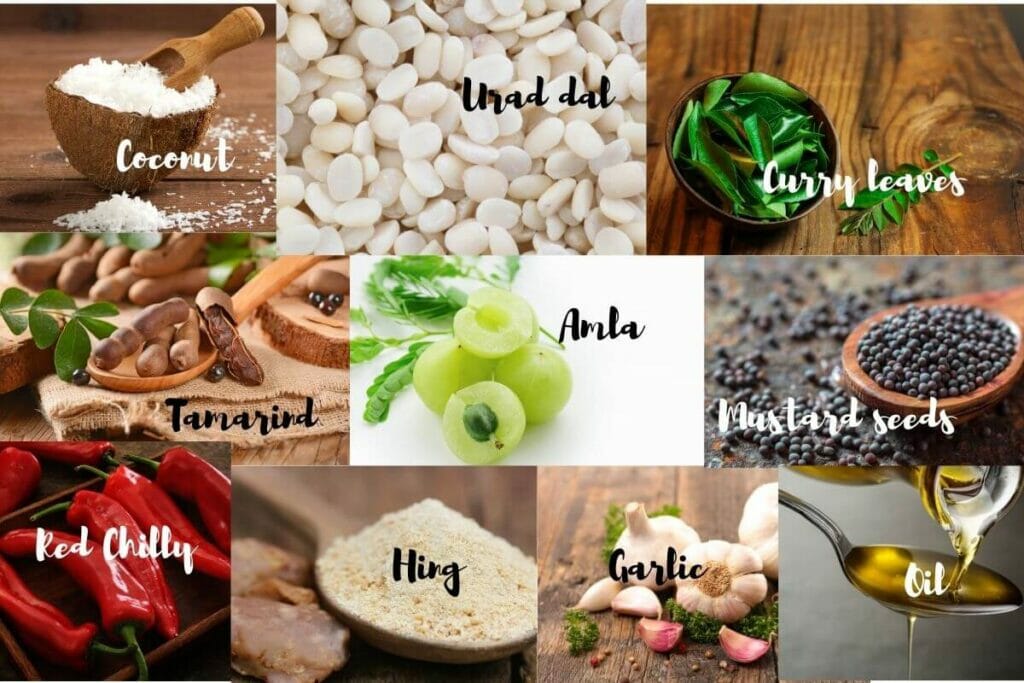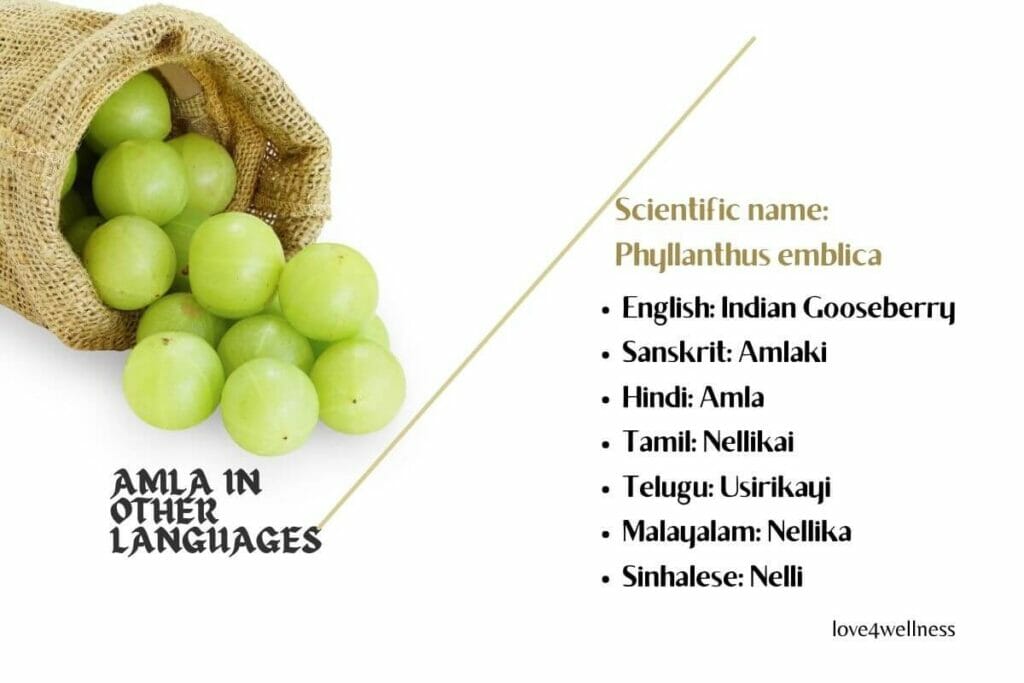Amla Chutney | Gooseberry Chutney | Nellikai Pachadi | Usirikayi Pachadi | Health Benefits | Recipe | 7 min read
On any day the probability of you hearing someone talk high about amla is often more! It’s not an exaggeration, though. The easily available and inexpensive amla is indeed a superfood! As you have rightly guessed, amla can offer excellent health benefits, and both modern medicine and traditional medicine hail this humble fruit high. So, make it a practice to include the fruit in your diet, and your general health is sure to be improved.
A caution here to note: Consuming too many at once is not advisable. 1 or 2 raw amla per day is completely fine. However, the predominant sour taste may not be appealing to many. Well, instead of taking raw amla, a much easier way is to make dishes using amla.
One such dish is Amla chutney aka gooseberry chutney aka nellikai pachadi aka usirikayi pachadi that provides you with the excellent health benefits not only of amla but also of urad dal, coconut, garlic, tamarind, and curry leaves. This post shares the recipe to make amla chutney and the health benefits the ingredients would offer you. If you would rather watch the recipe in a video, check out the YouTube video of Amla chutney.
A quick intro about Amla Chutney
This chutney is easy and quick to make. If you have the ingredients ready, you can make it in less than 15 minutes. It goes well with roti, dosa, and rice. Just spread it on a roti or dosa and roll it; an ideal dish for the lunchbox or picnic snack is ready. You can also mix the required amount in cooked rice, and enjoy it with papad. A simple, healthy, one-pot meal!
Now, before jumping to the recipe, how about a glimpse of the health benefits?
Health Benefits Of the various ingredients in Amla Chutney:
Amla:
Several studies prove that regular consumption of amla regulates blood sugar levels and blood cholesterol. Rich in vitamin C and antioxidants Amla is great for your skin, hair, and eye health. A regular intake will lower your risk of heart diseases, strengthens your immunity system, and cures respiratory ailments. Last but not least, it can help you shed those extra kilos by improving your body’s metabolism.
You might also like:
- Amla – A Humble Fruit With Miraculous Medicinal Benefits
- The Health Benefits Of Amla – Proven By Study
Urad dhal:
An excellent source of plant protein, it is also rich in fibre, folic acid, iron, magnesium, and calcium. While magnesium helps in lowering LDL cholesterol, calcium improves bone mass. Thus, regular consumption would improve your heart health and bone health. Further, it has anti-inflammatory properties and hence can reduce arthritis pain.
Red Chilly:
Red chillies are rich in antioxidants, particularly Capsaicin, which can relieve pain and promote weight loss. Several other nutrients are present such as vitamins A, C, B6, and K and minerals such as potassium and copper. However, since red chillies are included in lesser amounts in food, the vitamins and minerals are minuscule amounts and cannot be considered adequate for per day consumption.
Coconut:
Often referred to as Superfood coconut has an unmatched place in traditional diets. Traditional medicine systems also advise the regular use of coconut for its varied health benefits. Coconut meat or grated coconut provides satiating, easily digestible fibre. It is also rich in protein, vitamin B6, iron, and minerals such as zinc, magnesium, manganese, copper, and selenium. Most of its saturated fat comes from lauric acid, which increases your HDL cholesterol. However, consuming coconut can increase bad cholesterol, as well. Regular consumption in lesser amounts has potential health benefits that outweigh the harmful effects.
Garlic:
High blood pressure is one of the key reasons behind heart attacks and strokes. Active compounds in garlic can significantly reduce blood pressure levels, hence consuming 3-4 cloves of garlic is good to keep your blood pressure levels in check. Besides, studies show that garlic can lower LDL cholesterol, thus reducing the risk of heart diseases. The benefits do not end here; high in antioxidants, garlic detoxifies and reduces oxidative stress on your body, thus increasing longevity. Also, garlic will be great on your taste buds. Grate 1 or 2 cloves of garlic and add to a dish; the aroma is sure to make the dish more delicious.
Tamarind:
Tamarind has a list of traditional uses including the treatment of constipation and sore throat. An excellent source of riboflavin, vitamin C, and minerals potassium, magnesium, phosphorus, iron, and thiamine, tamarind is high in fibre too. Though it has considerable carbs, they have a low glycemic index, meaning they do not cause blood sugar to spike. Also, the polyphenols present have antioxidant and anti-inflammatory properties that can help in managing arthritis pain. Further, tamarind detoxifies the liver and is indicated in reversing fatty liver disease.
Curry leaves:
Indian households use these leaves for seasoning, yet their benefits are not simple and humble. An excellent source of vitamins A, B, C, and E, curry leaves are packed with antioxidants. So, consuming 5-6 leaves per day can strengthen your immunity system making your sick days less. Studies have shown that curry leaves intake helps in killing cancer cells, particularly in breast cancer. Further, the leaves protect brain cells from damage and reverse effects of damaged brain cells, thus slowing down Alzheimer’s disease.
Hing (asafoetida):
Hing or asafoetida has antibacterial, antifungal, and antimicrobial properties and can lessen IBS symptoms and also improve digestive health.
Mustard seeds:
The seeds are rich in trace mineral selenium that can reduce asthma symptoms and arthritis pain. It is also rich in magnesium that can help in managing blood pressure levels.
Oil:
Though foods containing fat are often discouraged, it is a critical part of a balanced meal. There are various cooking oils available such as olive oil, sunflower oil, coconut oil, etc. Each has its own benefits and bad effects on your health. Use sparingly every day so that you don’t miss out the health benefits they offer you.
Now to the exciting part, the recipe of Amla Chutney-
Ingredients:

The ingredients required for amla chutney are listed below. All the ingredients are quite easy to procure. If you are not able to get a fresh coconut, you can use desiccated coconut.
- Amla – 6 to 8, chopped
- Red chilly – 10, can be adjusted according to spice level needed
- Urad dhal – 1 tablespoon
- Garlic – 2 cloves
- Tamarind – an amla size ball
- Coconut – 2 tablespoons, grated (if fresh coconut not available, use desiccated)
- Salt – to taste
Seasoning:
You can consume amla chutney without seasoning; however, seasoning adds a flavour to the dish, making it more appealing. So, do not skip seasoning.
- Oil – 1 teaspoon
- Curry leaves – a few
- Hing – a pinch
- Mustard seeds – ½ teaspoon
How to prepare amla chutney?
Step #1:
Dry roast urad dhal, garlic, and red chillies. Once Urad dhal turns brown, add coconut and tamarind and roast for two more minutes. Switch off the stove and allow the roasted items to cool down to room temperature.
Step #2:
Meanwhile, in a pan add some oil, add the chopped amla pieces and saute for 5 minutes. Once it is half cooked, let it cool down.
Step #3:
Now, add the roasted ingredients listed in step 1 above to a blender jar and grind it to a coarse powder.
Step #4:
Further, add the sauteed amla pieces to the coarse powder along with salt and grind it to a coarse paste, adding a little water if required. Then, transfer the contents to a serving bowl.
Step #5:
Heat oil in a pan, add the mustard seeds, and allow it to splutter; then, add curry leaves and hing. Pour on the ground mixture in the bowl, and the amla chutney is ready to be served.
Bottom Line:
Healthy? – Yes. Easy to do? – Yes. Quick to make? – Yes. So, why wait? Purchase some fresh amla today and try the yummy amla chutney. Enjoy this dish once or twice a week to enjoy the health benefits of amla!
Images from canva.com


